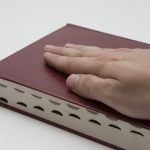Magistrate Charged with Perverting the Course of Justice

A South Australian magistrate has been charged with deception offences relating to the use of his government car.
The story so far
The charges follow an investigation by the state’s Independent Commissioner Against Corruption (ICAC) and include two counts of deception, one count of conspiring to commit an abuse of public office and one count of conspiring or attempting to pervert the course of justice.
It’s alleged that several weeks ago, Magistrate Bob Harrap misrepresented who was driving his government-issued car when it was observed committing traffic offences, and that he thereby he engaged in deception in order to obtain a benefit for himself.
It will be separately alleged that he conspired with another person to pervert the cause of justice and conspired to abuse his public office in relation to a matter that was to be heard by him.
While the offences may appear, on the face of, to be relatively minor, the charges carry serious penalties. Investigations are continuing and the ICAC expects more charges to be laid.
The ICAC Commissioner Bruce Lander said he had taken the unusual step of naming the Magistrate because not doing so would “harm the confidence the community necessarily places in the judicial system.”
Mr Harrap has since resigned from his position.
The offence of perverting the course of justice
Perverting the course of justice is an offence under section 319 of the Crimes Act 1900 (the Act), which carries a maximum penalty of 14 years in prison.
To establish the offence, the prosecution must prove beyond reasonable doubt that:
- You engaged in an act or made an omission, and
- By that act or omission, you intended to pervert the course of justice.
Section 312 of the Act defines perverting the course of justice as, ‘obstructing, preventing, perverting or defeating the course of justice or the administration of law’.
Examples of conduct that may amount to perverting the course of justice include:
- Attempting to bribe a police or judicial officer to avoid being prosecuted or punished,
- Falsely swearing or declaring that another person was responsible for an offence,
- Using another’s phone or email to manufacture a defence to a crime, and
- Encouraging or bribing another person to plead guilty to a crime they did not commit, or to provide a false alibi, or give false testimony in court.
Duress is a defence to the charge.
Professional misconduct
In this particular case, there is also the possibility that Mr Harrap could be banned from the legal profession due to professional misconduct.
Lawyers, solicitors and other legal practitioners are required to abide by a strict code of conduct, which covers all aspects of their job and lawyers are prohibited from engaging in any conduct that could demonstrate that they are not a fit and proper person to practice law, or that could bring the profession into disrepute. This can include fraudulent behaviour, misappropriation of money, deception, and inappropriate behaviour towards clients.
Section 497 of the Legal Profession Act outlines that professional misconduct is substantial or consistent failure to maintain “a reasonable standard of competence or diligence,” which renders a lawyer “not a fit and proper person to engage in legal practice.”
The case of Marcus Einfeld
In 2009, Former Federal Court judge Marcus Einfeld was struck off after he lied to evade a $77 speeding fine. After his car was caught by a speed camera doing 60kmh in a 50kmh zone, he said a friend of his, an American college professor named Teresa Brennan, had been driving the car. But it later emerged that Ms Brennan had died three years before the speeding offence took place.
Mr Einfeld pleaded guilty to perjury and making a false statement with intent to pervert the course of justice. He was sentenced to two years in prison and at the time said he committed the offence because he did not want to incur demerit points on his driver licence.
 Our entire firm is exclusively dedicated to criminal law – which makes us true specialists.
Our entire firm is exclusively dedicated to criminal law – which makes us true specialists.







